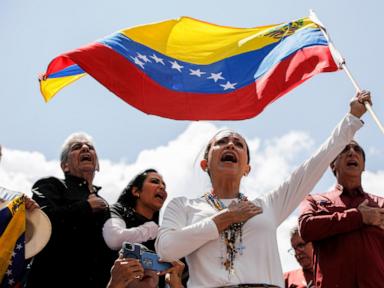ARTICLE AD BOX
A KNIFE-EDGE vote has paved the way for Vladimir Putin’s next land grab, experts have warned.
The Russian tyrant is now eyeing-up seizing Moldova, analysts say, after it voted this week to move towards joining the EU.
 AFP
AFP East2West
East2West East2West
East2West
Vlad must act now to stop it from forever leaving Russia’s orbit and is set to drawing his moves from his Ukraine playbook.
Moldova’s razor-thin – 50.39 per cent to 49.61 per cent – vote to constitutionally enshrine joining the EU this week comes after two shock accusations of Russian interference.
President Maia Sandu accused Moscow on Monday of trying to buy the vote of 300,000 people (about 20 per cent of the total vote) with “millions of Euros” on offer.
And last week, the country’s spymaster accused Wagner of training pro-Russian Moldovans to protest against the government at “guerrilla camps” in Serbia.
Experts told The Sun these grey zone tactics show Putin is using the same playbook that preceded his Ukraine invasion as he seeks to make it part of his new Russian Empire.
Orysia Lutsevych, Deputy Director of the Russia and Eurasia Programme at Chatham House said the “game was on” as Putin looks for a “quick win”.
Lutsevych said Putin’s plan wasn’t a theoretical scheme – but is in its early stages.
She said the 72-year-old is looking to destabilise Moldova and challenge the result of the election if the pro-Russian candidate doesn’t win.
She said: “[Putin] is consistent in his vision, that it [Moldova] belongs to him, and, as we see with Ukraine, he’s willing to take high losses, pay a high, high price.”
Lutsevych said that Putin could try and formulate a reverse colour revolution by destabilising and then overthrowing the pro-Western government in favour of a Russian one.
She said: “It’s similar to how Ukraine was before the 2013 uprising, where Russians were trying to get their way politically and by corruption by buying in voters.”
Inside Moldova exists two breakaway regions, Transnistria and Gagauzia, which align with Russia.
Lutsevych said they could be used by Putin similar to how he used the annexing of Crimea as a “springboard” into a greater invasion of Ukraine.
She said: “He’s interested in Moldova as a whole and these territories would only be as a ways to get his goals to the to control.
 EPA
EPA Getty
Getty“I think he may use these territories as clubs to incapacitate Moldova first and then eventually get it in full-fledged control.”
Another way Putin could strike is if he was able to build a land bridge to Moldova through Ukraine as part of the invasion.
Lutsevych said: “If Putin is making land gains along the Black Sea [in Ukraine] Moldova may collapse.”
If Moldova were to become a proxy-Russian state that would also add another hostile country next to Ukraine.
President Sandu won the first round of the election on October 20 with 42 per cent of the vote.
But there are fears now the opposition could gang up on her and back the pro-Russian candidate competing against her in the second round.
 Reuters
Reuters Getty
GettyChristina Harward, Russia Researcher at the Institute for the Study of War, wrote in a report last week that Moldova is a “battleground” state.
She told The Sun Putin is already spreading disinformation and could look to foment violence in the country as a way to prevent it shifting to the West’s camp.
Harward said: “Destabilization and chaos… serve the Kremlin’s interests as Russia tries to drive a wedge in Moldovan society and keep Moldova from gaining EU membership.
But Transnistria’s economy, largely under the control of former KGB officer Viktor Gushan, would greatly benefit from access to the EU market.
Harward said: “Having another post-Soviet state move closer to the West – and become more prosperous and democratic in the process – would be yet another reputational blow to Russia.
“Gushan’s interests are tied to his businesses so he is very sensitive to policy changes that affect Transnistria’s economy and his businesses’ ability to continue their operations – including on the black market.
“When Ukraine closed its border with Moldova, Gushan’s businesses were hurt so Gushan reoriented to the West to EU markets. So one of Gushan’s main priorities is likely maintaining his access to EU markets.”
What are Tansnistria and Gagauzia?

By James Halpin, Foreign News Reporter
Transnistria and Gagauzia are both regions formally inside Moldova – but both have tight links to Russia.
In fact, Transnistria, in particular, is so tight with Russia that the Institute at the Study for War considers the country to be occupying it.
It occupies a thin strip of land in between the Ukrainian border and the Dnister River which snakes its way down to the Black Sea.
Christina Harward, a Russia Researcher at ISW, said Russian troops have occupied the strip of land since it became independent.
She told The Sun Transnistria is already functionally part of Putin’s wider empire – with Russia still having 1,500 troops there.
Its security service, the MGB, drew most of its leaders from Russia’s FSB, she said.
She said: “Russia sent military personnel to support Transnistrian separatists in 1992 after the fall of the USSR and Moldova’s independence, and Russia has since maintained about 1,500 troops in Transnistria.
“Moldova has repeatedly asserted that Russia must withdraw these forces from Moldovan territory, but little progress has been made on this issue.
“Transnistria held a referendum in 2006 in which 98% said that they support Transnistria’s continued “independence” and subsequent accession to Russia.
“But there has been no movement towards Russia’s actual annexation of Transnistria.”
Harward said the Kremlin had increased its ties to the other pal inside the country – Gagauzia – since March this year.
Its governor, Irinia Vlah, is running on a pro-Russian platform at this election.
But Harward says there are differences in the two regions’ relationship wit Moldova.
She said: “The biggest difference is that Gagauzia is actually integrated into Moldova’s government, economy, and society, whereas Transnistria is a parastate.”
Harward said Transnistrian actors had their own interests that didn’t always align with Russia.
“Gagauzian officials, led by Gagauzia’s governor Yevgeny Gutsul, have been very open about their support for the Kremlin, with Gutsul having held multiple public meetings with Kremlin officials, including with Putin himself.”
 AFP
AFP East2West
East2West.png)
 3 weeks ago
1
3 weeks ago
1








 English (US)
English (US)